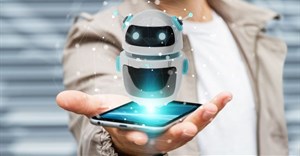
Subscribe & Follow
When AI meets workplace and the environment

Shining a spotlight on employees
One theme that is bound to shape business success in 2020 and beyond is the recent rise of the employee experience as a corporate priority. For decades, businesses have been focused solely on the customer experience: strong customer orientation and a smooth customer experience have been considered the route to success. However today, enterprises realise that a good employee experience is equally important: it improves engagement, which is a major contributing factor to business success. Engaged employees perform better at work, which helps improve the customer experience and grow business.
Employee experience is shaped by many aspects, ranging from the physical environment to corporate culture, the team spirit in an employee's immediate environment, and the tools provided by the employer to get tasks done. Due to today's rapid progress of digitalisation, employee experience increasingly means digital experience. However, in comparison to our private lives that are shaped by easy-to-use digital technologies, corporate IT frequently seems to have fallen far behind. The point of reference for a state-of-the-art user experience, for example, is the smartphone, not the office PC – just as it's the consumer cloud service or social network, not the corporate client/server applications and single-purpose cloud services.
For many businesses, the challenge for the years to come will be to match the usability of the digital consumer world and translate it into a modern employee experience. To achieve this, businesses will have to be more open to flexible, individualised workstyles, such as remote work, home office work, or part-time/time-sharing models. They will have to provide state-of-the-art tools and applications to allow employees and teams to collaborate across sites, continents, and time zones. And they need to replace cumbersome legacy applications with intelligent, easy-to-use digital workspaces. Some of the technologies driving this new user experience are based on the second important force that increasingly shapes our business world: artificial intelligence (AI).
AI: Going where no humans have gone before
Artificial intelligence has been around for decades – a computer beat the human chess world champion back in 1996. And yet, there has been a lot of talk about AI lately. This could easily be misunderstood as marketing hype. In fact, it is due to recent progress in AI – particularly in applying machine learning (ML) algorithms to solve important problems or to achieve things humans cannot do.
As consumers, for example, we all profit from virtual assistants on our smart devices or in our smart homes: with the help of AI-powered speech recognition, we can address virtual assistants in natural language to get information or trigger actions. Also, ML algorithms allow fitness trackers, for example, to identify deviations within our personal health data that indicate a need to exercise more, or to adjust our diet. On the business side, the power of AI/ML has opened the door for enormous progress across industries. The possibilities range from detecting attacks on corporate networks to identifying indicators of cancer in MRI scans – indicators that might easily escape even the trained human eye.
Throughout the 2020s, AI/ML will revolutionise a wide array of business processes, and even enable completely new ones. AI/ML will be integrated in an increasing number of decision-making workflows. It will be used for everything from improving production processes to individualising customer relations. At the same time, it will help to optimise the employee experience: when businesses leverage digital workspaces with intelligent features, ML algorithms automatically adjust the task and information feed to the individual employee's needs and work habits. By continuously analysing the employee's actions and preferences, a workspace will automatically support the user's activities better and better over time. This facilitates more efficient business workflows and more satisfied employees, the latter being key in the current global war for finding skilled talent – and, once they are found, keeping them.
These business improvements will happen while climate change continues to dominate the news. With greenhouse gas (GHG) emissions having reached an unprecedented high, the call for measures to mitigate global warming has become more urgent each year. Scientists have long predicted a future of higher global temperatures, along with rising sea levels, more severe weather events, and all the negative consequences these developments bring.
Technology and sustainability (re)evolution
The good news: all over the world, nation states, communities, NGOs, consumers, and businesses have started – or intensified – initiatives to battle the effects of global warming. So businesses need to consider the fact that sustainability is now one of the business imperatives for the years to come. Some businesses will have to adjust their CSR (corporate social responsibility) initiatives to reflect these more critical conditions, while others will have to establish a strategy in the first place to define their environmental goals along with the measures to achieve them.
Luckily, there is a variety of ways for businesses to become more environmentally friendly. Options include, among other things, establishing a corporate policy that rewards employees for "green" behaviour – such as switching to e-bikes for short-range commutes – or adopting measures to reduce energy consumption and waste in daily business operations. At the same time, businesses can analyse their production processes and service workflows to identify ways to use energy more efficiently.
Here, too, technology can make a meaningful contribution, as it allows employees to work anywhere, anytime, on any device. This means employees can easily work from home, avoiding the carbon emissions of a commute by car, even if it's maybe only once a week. And they might even work with their own devices (BYOD), reducing the number of computers and smart devices the company needs to acquire – i.e. less electronic waste that needs to be recycled. At the same time, digital technology speeds up workflows, reducing power consumption by cutting down on overtime. Also, one increasingly popular option for running IT is the public cloud – and most large public cloud providers are known for operating data centres at way better levels of energy efficiency than most enterprises or smaller businesses ever could.
Most of these technology developments are so massive and critical that they affect society overall, as well as affecting organisations of all sizes. So businesses need to take responsibility and design strategies that focus not only business outcomes, but also on employees and the environment. For those that do not yet have this kind of business strategy, it would be great to put such a strategy in place, as it is good for your conscience as well as for your business!

















